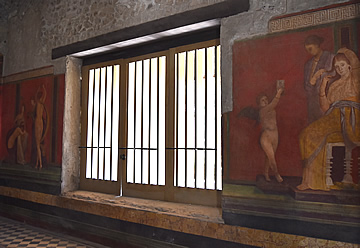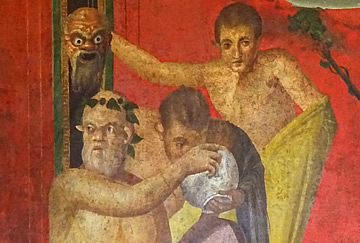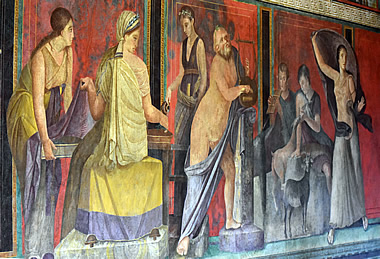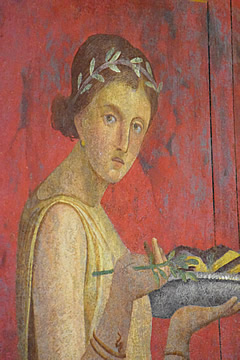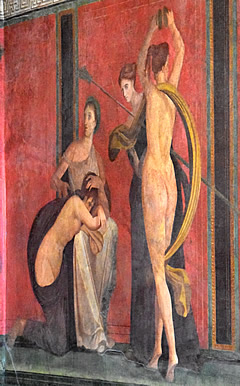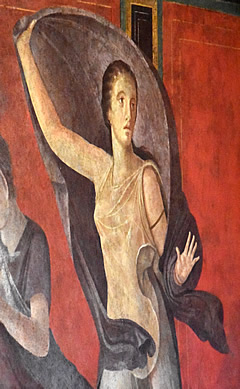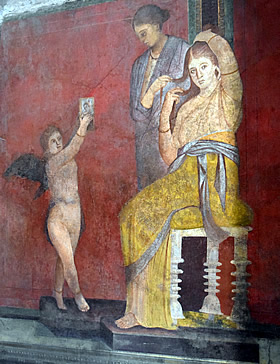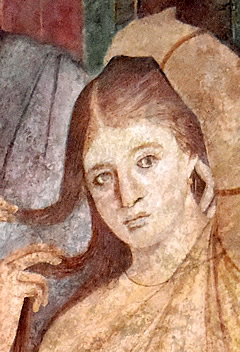

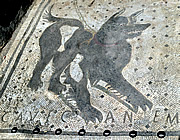
Pompeii is one of the most fascinating ancient sites in the world - it takes a long day to cover it in any depth. This second part includes several aristocratic villas, in particular the Villa dei Misteri.
Related pages:
Pompeii History and Regiones I & II
Pompeii Regiones VII, VIII
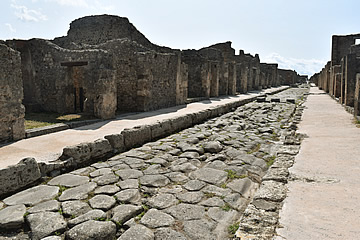
La Città da Scoprire according to the guide map - City of Discovery or to Discover, not quite sure why!
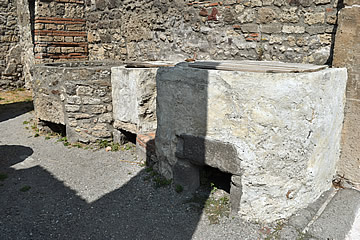
Regio V has not been fully excavated, perhaps only a quarter has been investigated. Nevertheless, it still has much of interest including workshops, bakeries and fine houses.
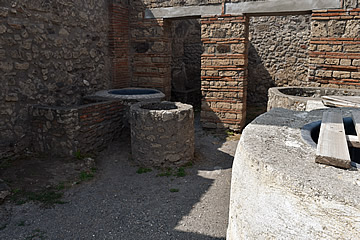
There are a couple of interesting workshops of Insula I with dyeing kettles - six of these dyeing workshops have been discovered in Pompeii.1 Dyeing kettles were lined with lead though the Romans were aware of the toxic nature of the metal. This seems to have been quite a large concern, with a similar property next door - perhaps the original business was doing so well it needed to expand, though the two do not have a connecting doorway.
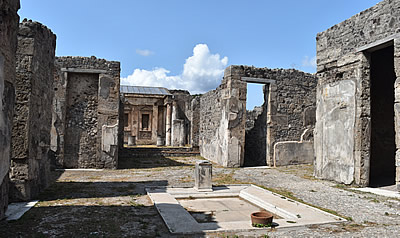
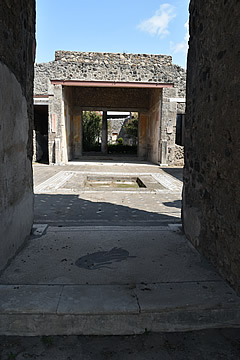
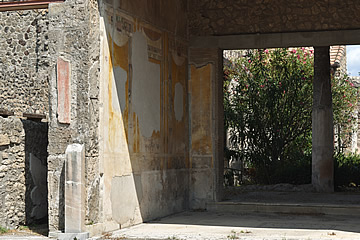
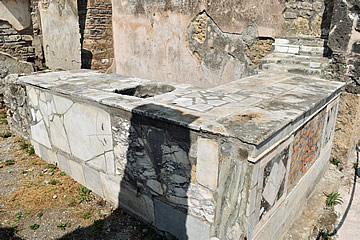
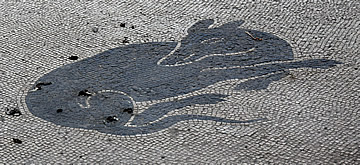
A servant called Spatalus managed a thermopolium or caupona on the corner of Insula 1 on Via di Nola.2 Whereas a thermopolium is identified as a (hot) food and drink establishment, a caupona is a place where wine and ready-dressed meat were sold.3 As well as the bar room there was a wine room in this establishment.
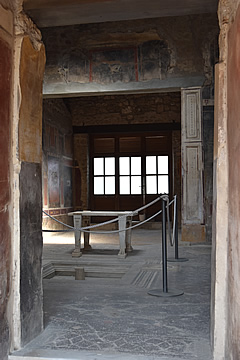
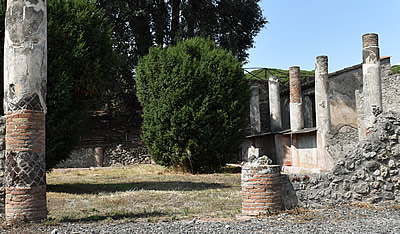

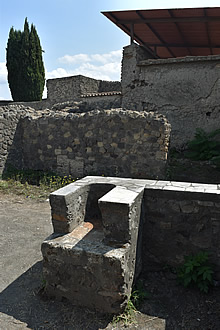
On the north west side of the city with Porto Ercolano at its north west corner and Porta Vesuvio on its north east corner. This Regio has been fully excavated and has many fine houses.

There are some good examples of bars which served food and drink, variously called in the sources: popina, taberna, thermopolium and caupona. I tend to use popina for a smallish place, caupona if there is evidence of a wine room where perhaps more wine than food was sold, and taberna not at all - I think of this as a shop. Thermopolium is perhaps not the best term to use, being of Greek origin, but it is ubiquitous in the many websites and sources.
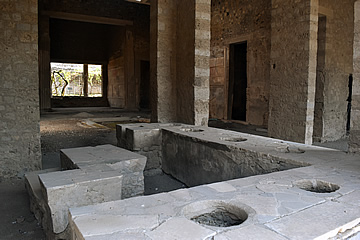
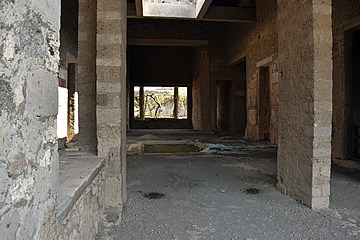
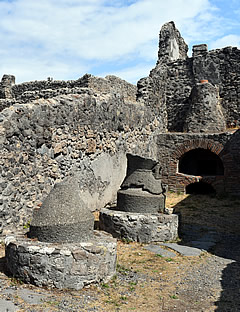
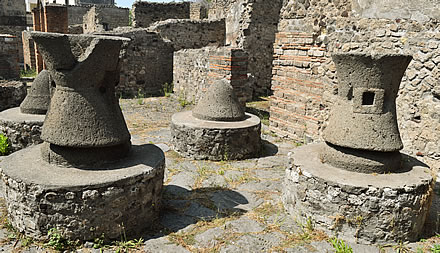

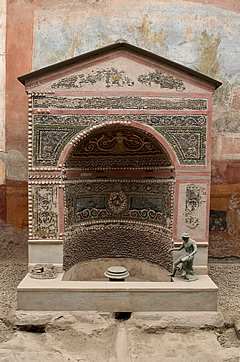

Casa della Fontana Piccola has one of the best-preserved mosaic fountains - high on everyone's "must see" list!
The fountain in question is actually quite large, perhaps three metres high, and encrusted with shells and mosaics. On its rim sits a bronze statuette of a fisherman.
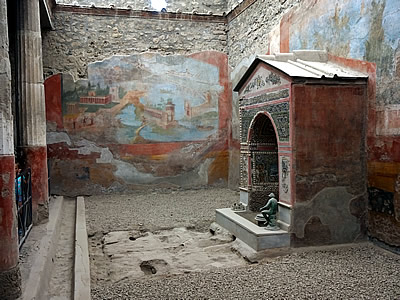
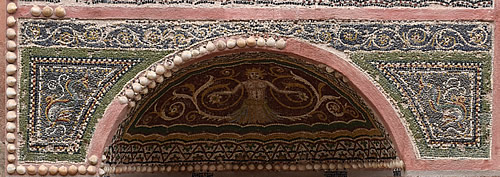
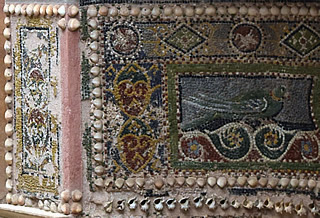
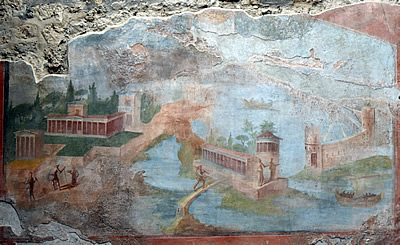
The House of the Faun takes up the whole of the long narrow Insula 12. The main entrance is on Via della Fortuna leading directly into a large atrium with impluvium where the statue of the faun was found.
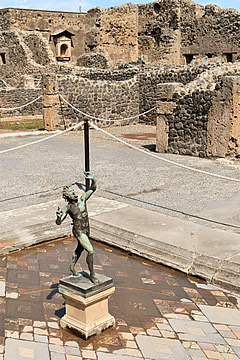

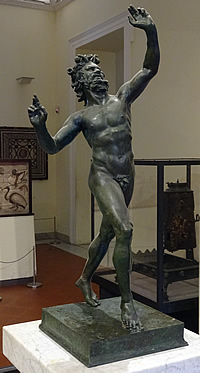
Homes varied greatly in size and richness from a humble single room above a work place, to modest dwellings with living rooms and a latrine to the full-blown insula-sized aristocrat's house with up-to-the-minute decoration and every comfort, including private baths.
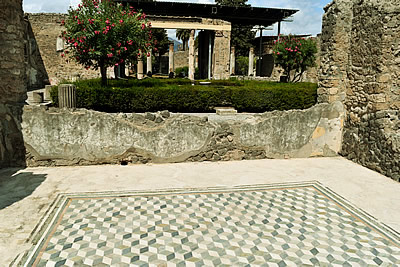

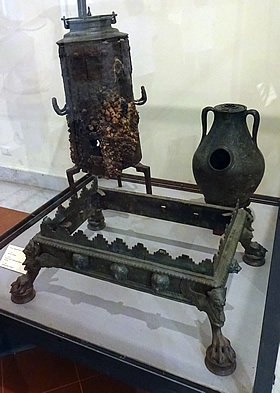
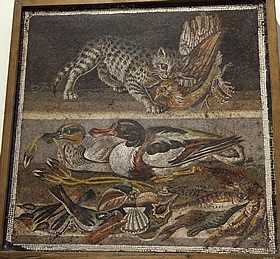
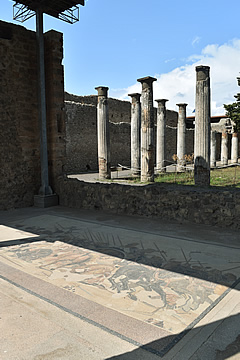
The House of the Faun belonged to a man - or perhaps woman - of wealth. Not only did it have the de rigeur atrium with impluvium - a design borrowed from the Greeks - and all of the usual rooms of an aristocratic home, it had two porticoed gardens.4 Its spacious layout and rich decorations would signal to any visitor that the owner was a person of quality.

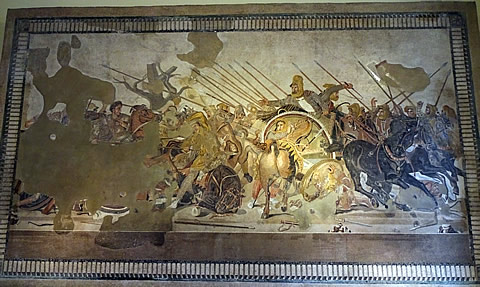
The Alexander Mosaic from the House of the Faun is one of the most famous finds at Pompeii. Made of around 1 million tesserae it depicts the Battle of Issus between the armies of Alexander the Great and the Persian King Darius III in 333 BC.5 The technique employed is opus vermiculatum which uses very small tesserae, enabling fine detail to be rendered. The original is now in the Naples Archaeological Museum.
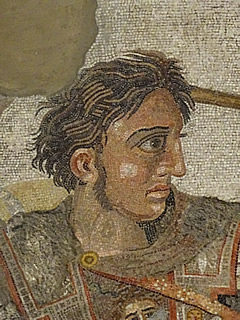


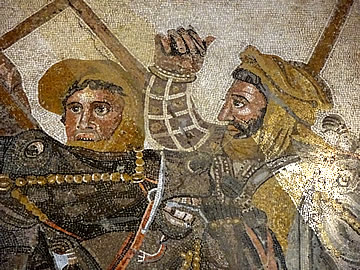
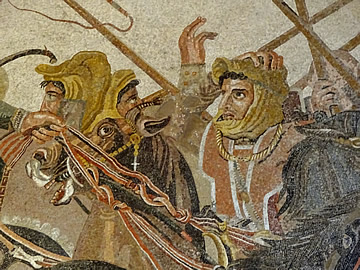

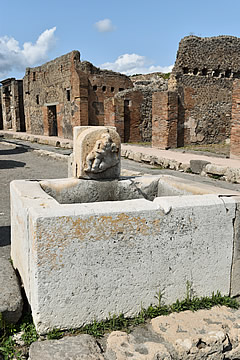
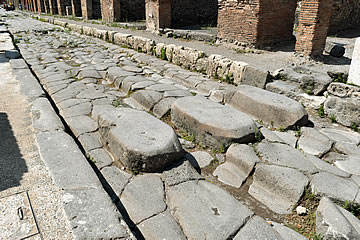
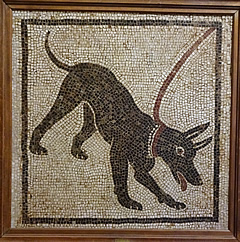
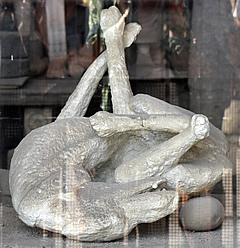
One of the most enduring emblems of Pompeii is the guard dog which is marked out in mosaic floors on numerous entrances including Casa di Orfeo. And one of the most horrific is the cast of a dog, chained in the entrance of the same house, unable to escape.6
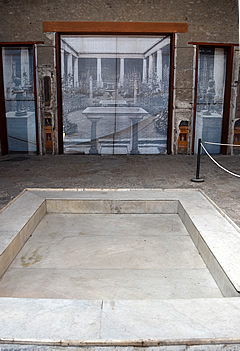
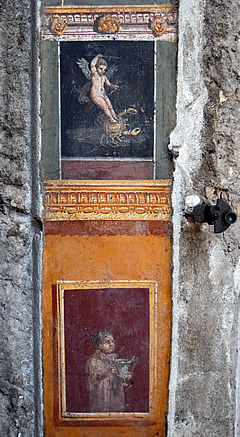
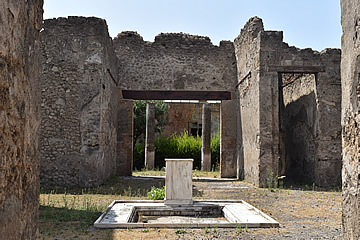
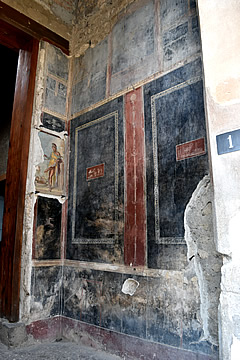
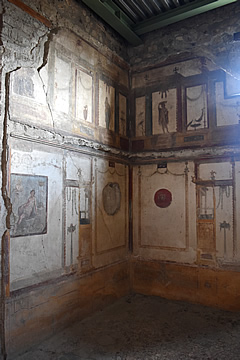
Seals were found in the Casa dei Vetti bearing the names of two of the owners, very wealthy freedmen. The house was in the throes of being lavishly repaired and redecorated after the earthquake of 62AD when Vesuvius erupted.4

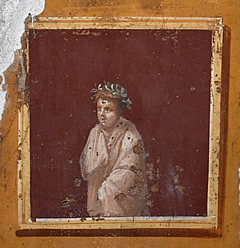
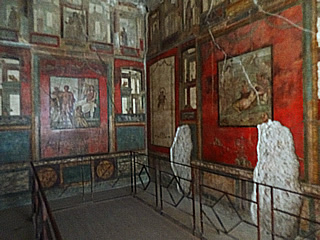
During the reign of Augustus, from 27BC to 14 AD, piped water was finally delivered to the city with the completion of the Serino aqueduct.4 No longer was it necessary to collect rainwater in the impluvium in the atria of the larger houses and these were often completely lined with marble.
The Tuscan atrium (i.e. with no columns surrounding the impluvium or supporting the roof) is one of these with a marble-lined impluvium, now restored to how it would once have looked.
The triclinium is decorated with large paintings of mythological scenes on a red background, surrounded with architectural scenes.
Another clue to the wealth of the owners is the use of bright red cinnabar, a mineral pigment, in the paintings.
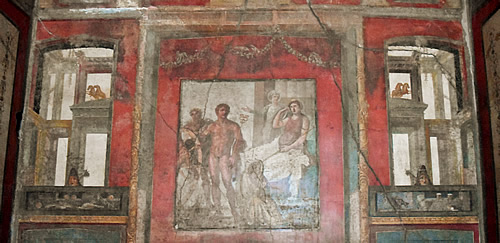
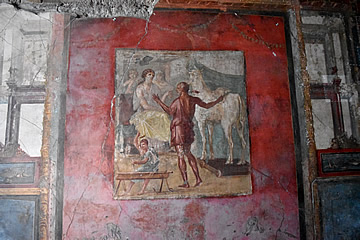

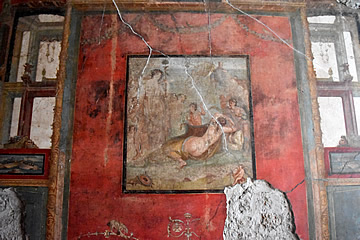
Insula 17 on the west of Regio VI and Insula 16 on the North west of Regio VII make up what is known as Insula Occidentalis.

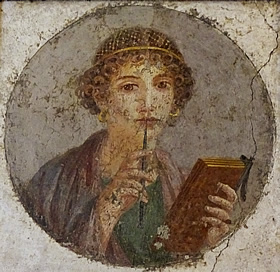
The famous painting of a woman with wax tablets was found here, popularly known as "Sappho".7 She holds a stylus in her right hand, meditatively touching her lips before, perhaps, writing down her thoughts. The painting is now in the Naples Archaeological Museum.
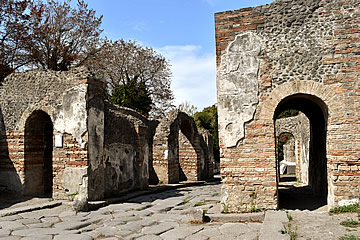
The Via dei Sepolcri leading from the Porta Ercolano on the north west corner of Regio VI to the fabulous Villa dei Misteri just outside the city of Pompeii is lined with tombs. There were also several large houses and quite a few shops.
Soon after exiting the gate there are what is known as schola tombs on the left hand side. These are unique to Pompeii which has eight and were popular with the elite families. They consist of a semicircular tufa wall, forming a bench on the inner side, with a podium in the middle.4
The Schola Tomb of Mamia has an inscription on the back rest of the bench which identifies the tomb as belonging to the priestess Mamia and that the burial place was given by decree of the town councillors.6
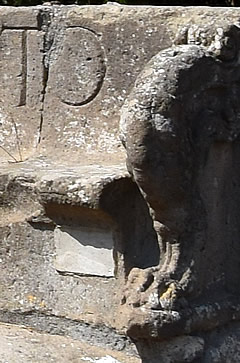
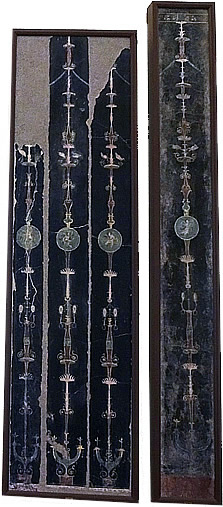
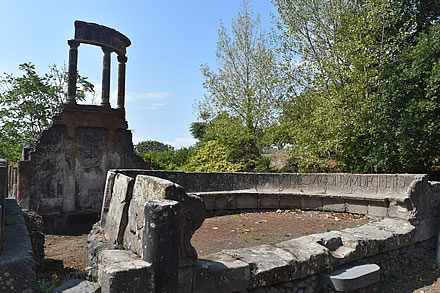
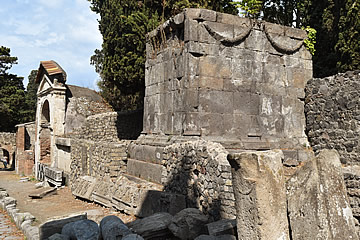
The so-called Villa of Cicero was one of the first to be excavated in the mid-18th century. Finds were removed and the site reburied so there is little to see today. Some of the most beautiful wall paintings and mosaics have been discovered here.
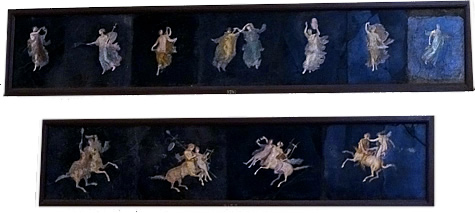
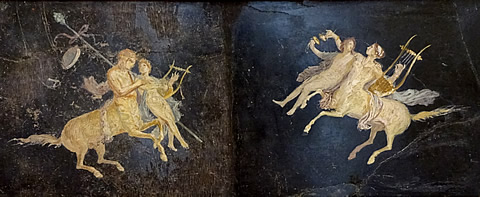

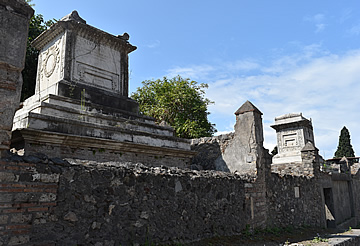
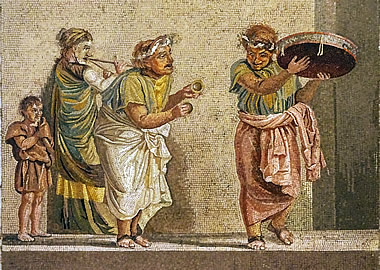
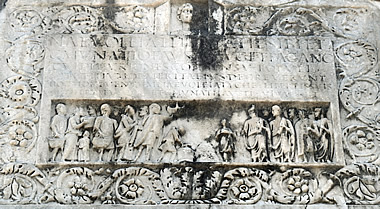

The Villa dei Misteri has probably the best of all Roman-era wall paintings to have survived. In particular a sequence of pictorial narrative scenes in a triclinium on the theme of a young woman's initiation into Dionysiac rites are almost complete. It is a colourful copy of a Greek painting from the 4th or 3rd centuries BC.4
The villa was built just outside the Porta Ercolano, Pompeii's north western gate, some time around the 1st century BC. It had around 90 rooms with a central large peristyle. On its north side were storage and service areas, south and east servant quarters and kitchens, and to the west the owner's luxurious residential quarters which, at the time, overlooked the sea.
Over the centuries it has, of course, been altered and remodelled but it was so badly damaged by the earthquake of 62AD that it was deemed to be beyond full restoration and was undergoing conversion to a farmhouse when the eruption occurred.4
The original entrance was from the east and led directly into the impressive peristyle. From here a Tuscan atrium (without columns around the impluvium) marks the beginning of the residential quarters. Today we enter from the southern colonnade and visit exclusively the residential quarters.
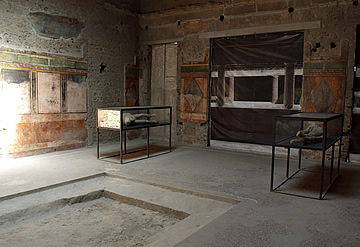
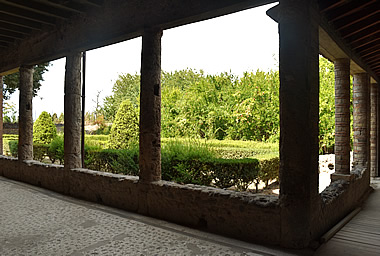
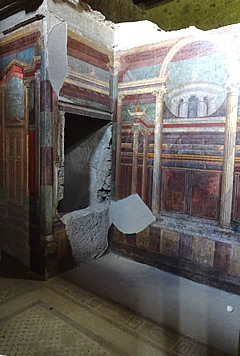
The villa had viridaria on the north west and south west corners, extending along the sides where the villa's master rooms are located.
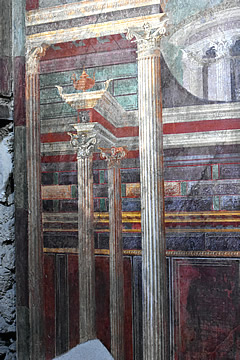
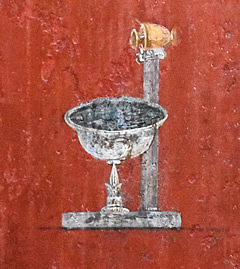
North of the atrium is a very well-preserved double alcove cubiculum with beautiful Second Style painted walls featuring architectural scenes in perspective with columns, arches, a door, and pediments.
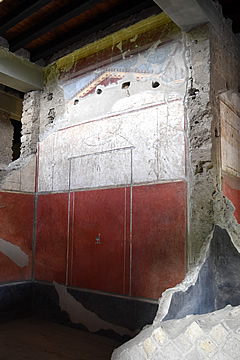
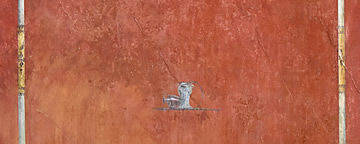
Nearby, in stark contrast, are two austerely decorated rooms with the tiniest of paintings set in the centre of large red panels.
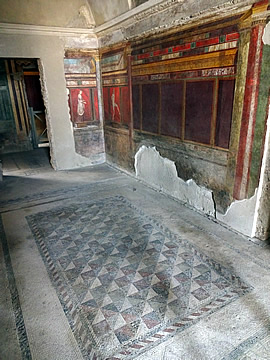
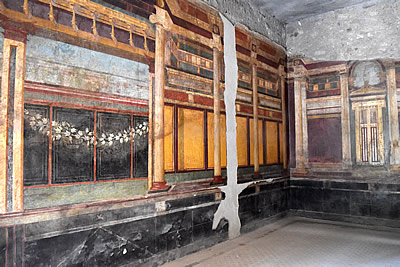
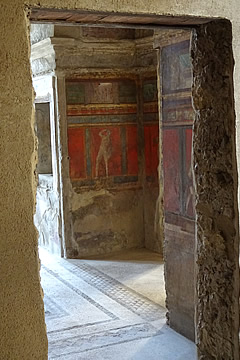
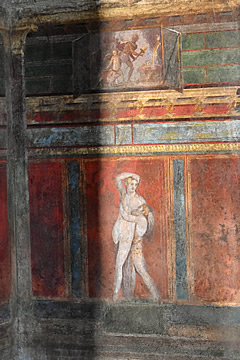
A room on the south west corner of the Tuscan atrium has a beautiful geometric mosaic floor and wall paintings of figures on the precious red cinnabar background. One of the attributes of red cinnabar is that it turns black on exposure to sunlight. It is also rather toxic, being derived from an ore of mercury.

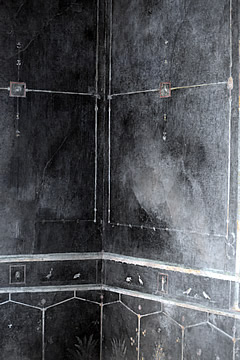
North of the room with the figure paintings and directly west of the Tuscan atrium is a tablinum where the master of the house would receive guests and clients.
This tablinum is particularly striking as it is one of the best examples of black ground Third Style decoration in Pompeii. The black walls divided into three horizontal bands, the upper taking up about half the height of the wall and painted with thin architectural elements and small central paintings.
The thin central strip is decorated with birds and Egyptian-inspired figures, the lower register with plants.

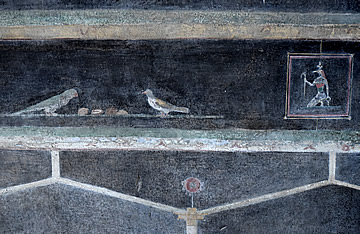
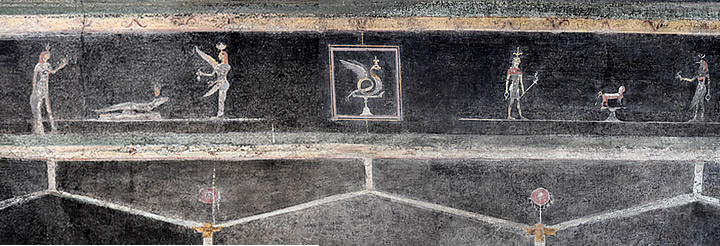
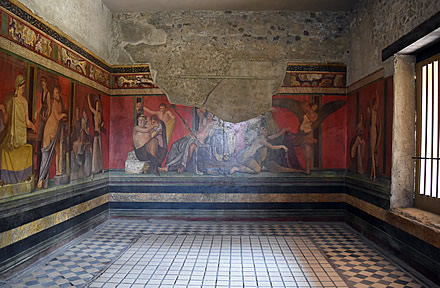
Beautiful though all of these painted rooms are, they cannot compare with the magnificent painted triclinium in the south west corner of the villa. The large scale painted narrative has been interpreted as the initiation of a young woman into the Dionysiac rites before she is married. It is composed of ten connected scenes which cover all four walls of the room.
It begins with the reading of the ritual by a young Dionysus, through the marriage of Dionysus and Ariadne, to the uncovering of the fertility symbol of the ceremony.4 Along the way are groups of women, pastoral and drinking scenes, dancing and the beautiful young woman brushing her hair, observed by a cupid on the wall to the right of the entrance in the south west corner. On the corresponding wall to the left an older woman watches over the ceremony with a benign, if a little anxious, appearance. These latter two figures are difficult to photograph as it is not possible to actually enter the room.
